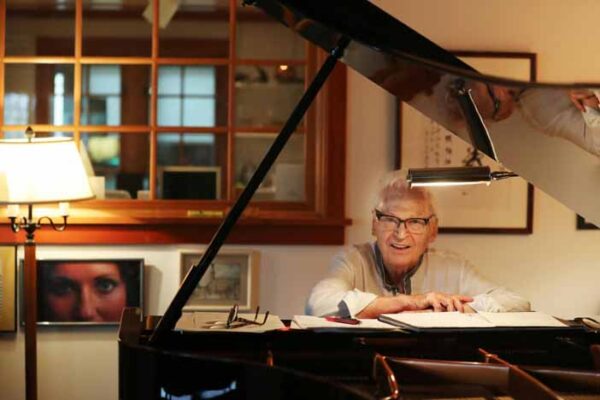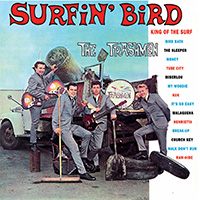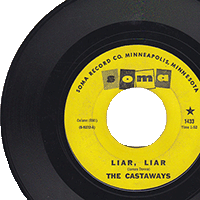Herb Pilhofer
The following biography of Mr. Herb Pilhofer was written by his daughter Nancy upon the occasion of his induction into the Minnesota Music Hall of Fame in April 2025. I am grateful to Nancy and her father for sending me the transcript and pictures that were presented at the ceremony. The materials have been divided between this page on Mr. Pilhofer’s life as a musician, and Sound 80, the music studio he created and ran so successfully for many years. All photos below were provided by the family unless otherwise attributed. I have supplemented the supplied text and pictures with additional information from newspaper articles and other sources as noted.
1945
Herbert Norman Pilhofer was born on April 18, 1931, in Nuremberg [or Fuerth, a small city just 4.3 miles from Nuremberg], Bavaria, Germany, in what was once West Germany. His father died before he was born, and he and his family suffered many hardships while enduring World War II.
In 2001, Michael Anthony of the Star Tribune told the harrowing story of Herb Pilhofer’s early days:
If “The Herb Pilhofer Story” ever becomes a movie, this will be the key scene:
In the Spring of 1945, after Germany’s surrender, the citizens of bombed-out Nuremberg – mainly women and children – lived in terror, expecting Allied troops to enter the city and kill everyone in sight.
White sheets hung from apartment windows, saying, “We surrender.” For two days, people silently waited in doorways and air-raid shelters. Among them were 14-year-old Herb Pilhofer, a classically trained pianist, and his mother.
“After this deafening silence, I suddenly heard something, and I remember this as if it were yesterday,” Pilhofer said. “We’re in this big apartment building, looking out, and around the corner comes a jeep with four of the blackest individuals I’d ever seen – I had never seen a black person before – sitting there smiling and the car radio blaring a swing arrangement of “Goody Goody.”
Pilhofer had never heard jazz. The Nazis had banned it. Hooked by the sounds of liberation, he pursued a path that eventually led to Minnesota … (Minneapolis Star Tribune, June 2, 2001)
And so began Herb’s 80-year love affair with music, but particularly Jazz.

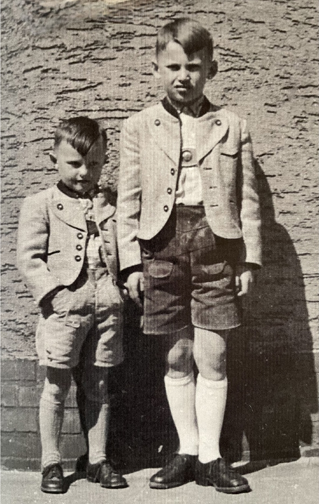
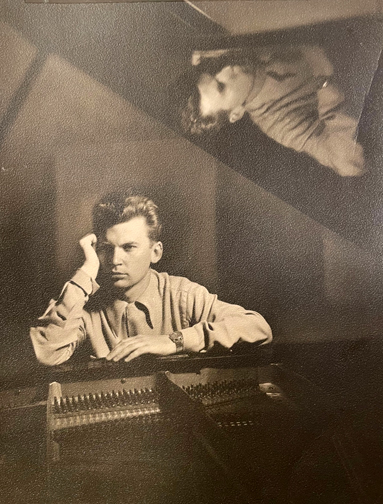
From humble beginnings playing a tabletop keyboard called a tafelclavier, Herb soon taught himself jazz composition, arranging and improvisation, studying at the Nuremberg Music Conservatory. In newly liberated Germany, the young pianist eagerly consumed jazz recordings, studying solos by Art Tatum, Lennie Tristano and George Shearing. He formed his own combo, and armed with abundant natural talent and motivation, he was soon featured nightly in an enlisted men’s service club in Nuremberg, as well as a Sunday morning radio program, “Herb’s Harmony Highlights,” on the Armed Forces Radio Network that was broadcast throughout Europe. His band played for Allied troops, accompanying singers such as Vic Damone.

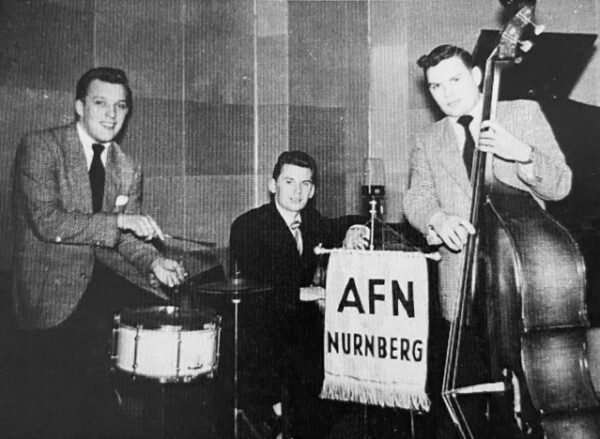
1954
Herb dreamed of immigrating to America, loving jazz and the freedom America offered. In 1954 he married a woman from Albert Lea, Minnesota, who was in the Army Special Services, and thanks to the sponsorship of a bass-playing army captain, he was able to come to America. He left Europe from Rotterdam, Netherlands, on May 14, 1954, at the age of 23, and arrived in New York on May 26, 1954. The couple soaked up the jazz scene in New York, and then settled down in the Twin Cities.
One of his first gigs was a comedy of errors in New Ulm. Booked to play piano for a week at Esser’s Bar as “Herb Pilhoser … direct from Germany,” guests wanted polkas and waltzes and maybe a guy in lederhosen. He was told by the owner, “Kid, you don’t cut the mustard … you’re fired!” The next day he went to KNUJ, the local polka radio station, and listened to German drinking songs, which he’d never heard in Germany. He transcribed and played them, mixed with some jazz standards, and made it through the week.

He also enrolled in the Music Department at the University of Minnesota, studying under composer Earl George until at least 1958. Though thoroughly at home in an academic world which included such “serious” composers as Paul Fetler and Dominick Argento, Herb left evening studies and teaching assignments behind to further his jazz education.
In the 1950s and ‘60s, a jazz musician could make a living playing six nights a week. For more than a decade, Herb headed one of the best jazz groups – trio, quartet, quintet, or octet, depending on the venue – in the Upper Midwest. Some of the places Herb worked were:
- The Lipstick Lounge in 1955.
- In 1955 through 1958, his Octet was featured at outdoor summer shows in the courtyard behind the Walker Art Center.
- The first Herb’s Bar (no relation) was located at 324 Marquette Ave. in Minneapolis. Pilhofer started working there in 1955 with an Octet, then pared down to a Trio in July 1956. In May 1957 he expanded to a Quartet. Herb’s Bar moved to 654 Second Ave. No. at Glenwood Ave. in late 1963, and in November 1963 the entertainment was the Herb Pilhofer Duo, with Ted Hughart on bass.
- Another venue was Freddie’s, starting on December 22, 1958 to about 1960.
- Pilhofer’s Trio worked at the Bamboo Room and the Apartment in the White House in Golden Valley in 1961 and 1962.
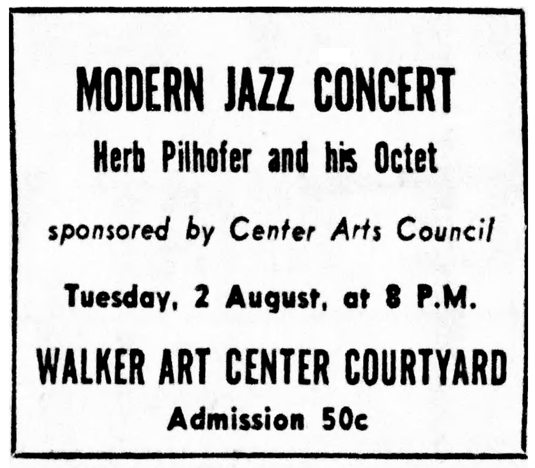
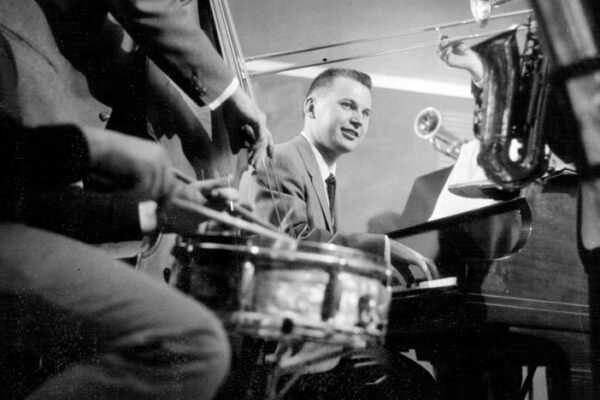
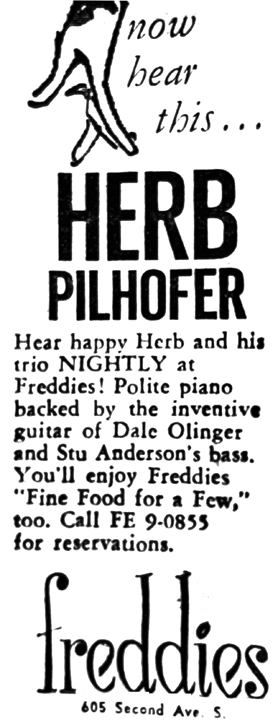
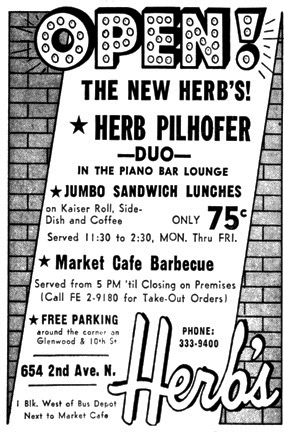
1957
At the same time, he took his groups into the recording studio and released three well-received albums. His 1957 debut album, “Jazz from the North Coast” featured some of the best musicians the Twin Cities jazz scene had to offer. We’re told that the album was recorded at the Swedien Recording studio, and the execs at Zephyr Records wanted “a color shot of the band in our typical northern atmosphere.” Well, they trooped out to Lake of the Isles, where there was NO SNOW! Artificial snow had to be imported for the shot. (Minneapolis Star, February 23, 1957)

1959
His 1959 release “Trio” was dubbed “best of the lot” by Metronome magazine. Leonard Feather singled out Herb as the “best new piano talent of the year” in Downbeat magazine.

1960
And in 1960 the Herb Pilhofer Trio released “Jazz.”
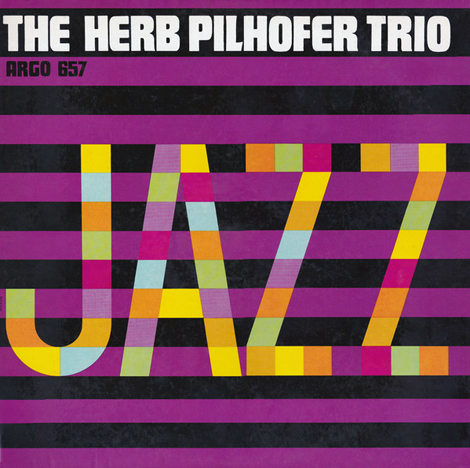
For Herb, it was a time of decision. The road to national recognition didn’t particularly interest him. So, he stayed in the Twin Cities to raise his family and look for new opportunities. Advertisers and agencies began to seek him out to create music for radio and TV. Big accounts like Pillsbury, Wrigley’s, 3M, Dairy Queen, Honeywell, Pan Am, Northwest Airlines, and Dayton Hudson came his way. Never pigeonholed, at the same time he wrote a three-part suite for his jazz quartet and the Minneapolis Symphony Orchestra.
1963
A man who has always thrived on taking risks and acting on gut instinct, Herb was immediately drawn to a new and very different project. The much-heralded Tyrone Guthrie Theater was about to open in Minneapolis, and he was recruited as its first Music Director, despite having never seen a Shakespearean play. He subsequently helped design the Guthrie sound system, wrote the fanfare that was the Theater’s signature for over 50 years, and composed music for more than 15 productions over eight seasons. From jazz to jingles to the mainstage, Herb displayed the same versatility and creativity that has distinguished his entire career.
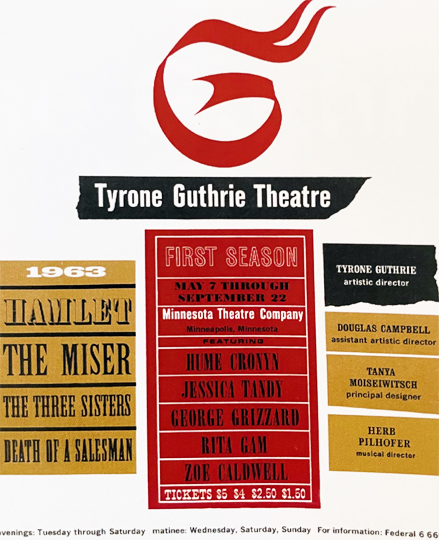

1964
In an ad in the 1964 AFTRA Catalog, Herb was described as “Composer, arranger, conductor, pianist… Musical Director, Minnesota Theatre Company at the Tyrone Guthrie Theatre; musical consultant to Midwest advertising agencies… Advertising music; film scores; music for the theatre and dance; special events and special effect… Jazz, third-stream, traditional; orchestral, chamber, band and vocal music……………”
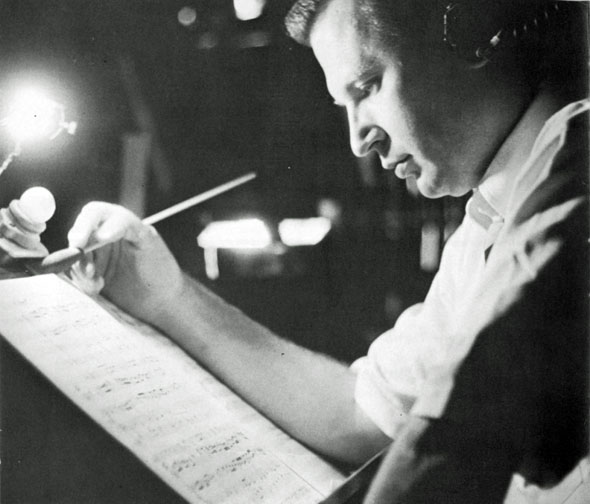
1967
On June 13, 1967, Will Jones reported that Pilhofer had purchased the former Kay Bank studio at 2541 Nicollet, with John H. Michaelson, who had been chief engineer at the studio. (Minneapolis Tribune) The ad below announced that the building was now occupied by UA Recording. Michaelson was President and Pilhofer was Vice President.

Sometime in 1967, Vernon Bank sold his 1/3 interest in Universal Audio Sales Corp. to Jan Jansen, Pilhofer, and John Michaelson. The company had 60 employees. (Minneapolis Star, December 25, 1967)
1969
After six years working at Kay Bank Recording Studio (later UA), Herb’s frustration at the lack of innovation led he and three partners to put together a new state-of-the-art recording studio in 1969. Please see a separate page on Sound 80 for information on that phenomenal enterprise.
1976
In 1976, Herb released “Olympus One,” which he wrote, arranged, and produced at Sound 80. The title track was commissioned by the U.S. Olympic Committee to promote the Montreal summer games. It was described by Michael Anthony of the Minneapolis Tribune as “stunning in arrangement and performance and a joy to listen to.”
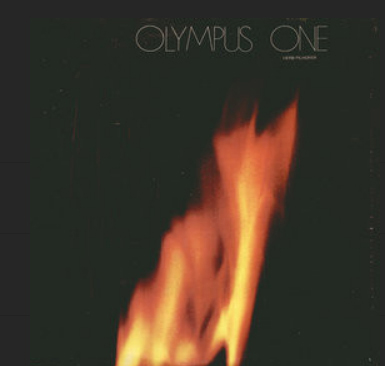
1979
For Herb’s 1979 album, “Spaces,” he fronted 40-plus musicians to create what a reviewer called “a three-dimensional sound painting – a jazz landscape.” Consisting of six original and one co-written song, it was also recorded on the new 32 track 3M Digital Mastering System.

But Pilhofer the musician was at odds with Pilhofer the business executive. It was an identity crisis resolved only with the dissolution and sale of Sound 80 and creation of a scaled-down operation in his Minneapolis home studio. With engineer/sound designer son Eric, his new venture, Pilhofer Music, allowed him to experiment and write as challenging projects came his way, and maintain a better work and life balance. In addition to many advertising scores for agencies around the country and clients such as Mercedes, Audi, American Express, Discover Card, US West, Budweiser, and General Mills, there were countless feature, documentary, and commercial film scores, including Oscar nominated “Always a New Beginning.”
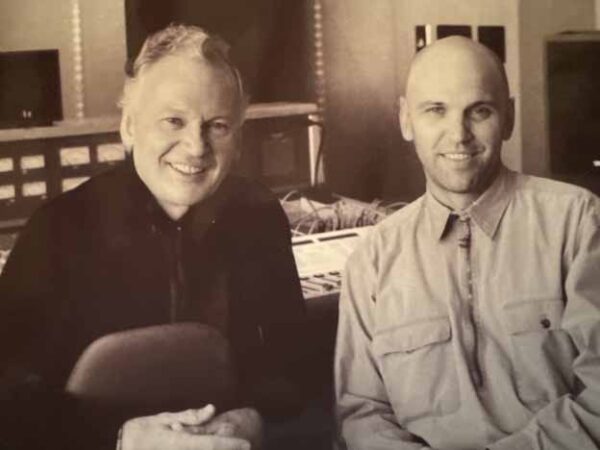
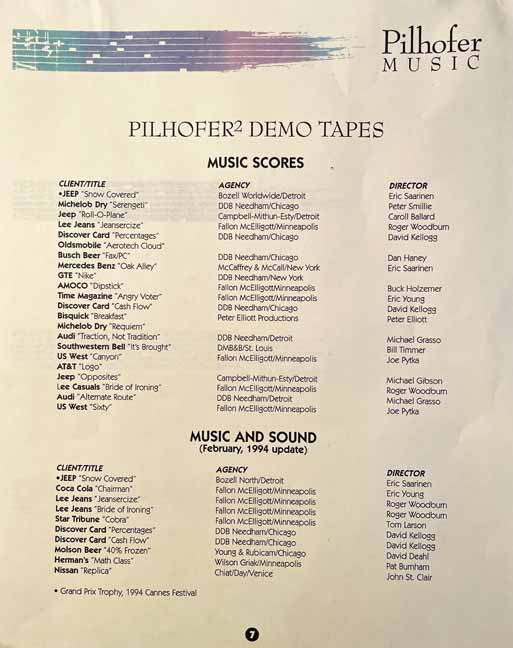
2000
In January 2000, Herb decided to give up commercial work at his home studio and sold his synthesizers. (Minneapolis Star Tribune, June 2, 2001)
2001
In 2001, at age 70, after a 40-year detour, Herb was back on the jazz track with live performances by the Pilhofer Jazz Quartet at the Dakota Bar and Grill and the release of his new CD. Gone were the synthesizers and lucrative commercial gigs. It was also a special opportunity to team with his son Michael, a highly regarded live and session jazz drummer. “Full Circle” was Herb doing what he was doing strictly for the sake of doing it … for his sake, and the music’s sake. With an immense sense of freedom he said, “Here’s what I love to do, folks. If you care to listen, I’ll do my damnedest.”
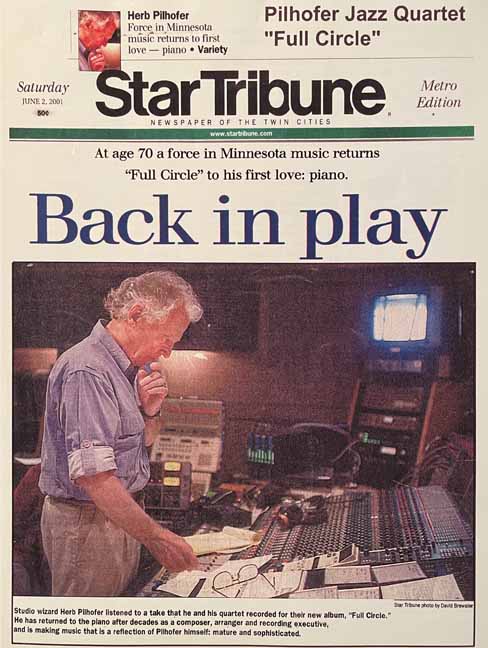


Herb used this “retirement” to pursue his passions more intentionally. Rarely without a camera bag, he was drawn to photography early in life. Nature, landscapes, architecture and family were his focus. And he replied to the protests of his children, “someday you’ll thank me for this” …and he was, as usual, 100 percent right. Frequent trips to Germany to see family and to share German culture with his American family was important to his soul. Adventuring to Africa, sailing in Lake Superior, and relaxing at the idyllic family retreat in Wisconsin inspired him.
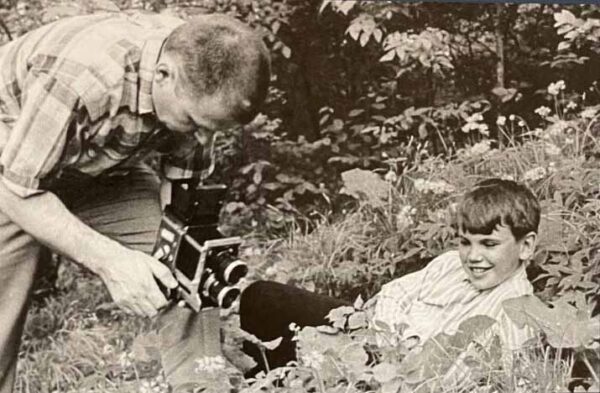
With an extraordinary life worthy of a biopic, and five back-up drives of photography, Pilhofer decided to put together a memoir for his family. For his 80th birthday, he delivered “Das Buch,” a lavishly illustrated, lovingly assembled scrapbook of his life that shows everything from his father (who died before Herb was born), to a centerfold family tree, and thousands of curated photos.
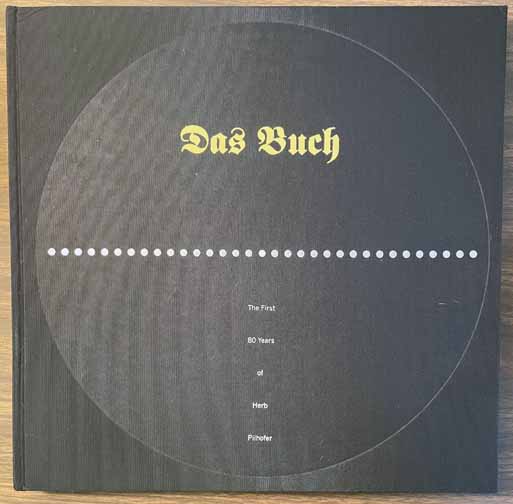
After turning 88, Pilhofer came full circle again, returning to his roots as a jazz pianist. With one bad ear and one bad eye, he had to soak his arthritic hands in wax each morning to play the piano. But Herb was feeling great about performing in public for the first time in 18 years, at Crooners Supper Club. In two sold out shows, surrounded by family, and friends, he felt the support of the Minnesota musical community, recognizing faces spanning decades.
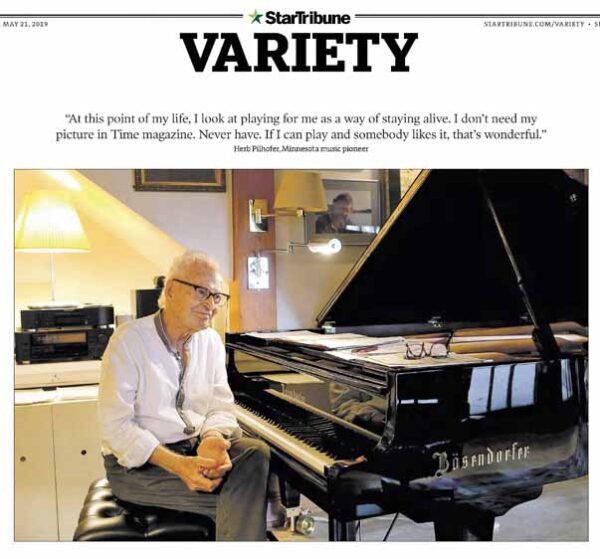

“At this point of my life, I look at playing for me as a way of staying alive,” he said while sitting at the Bösendorfer grand in his home. “I don’t need my picture in Time magazine. Never have. If I can play and somebody likes it, that’s wonderful.”

All professional accomplishments aside, without a doubt Herb feels the great achievement of his life is his family. Holidays are filled with great conversation, laughter, delicious food, and always German bretzen. His six children, ten grandchildren, two great grandchildren and 45-year relationship with his amazing wife, RoseMary, bring him his greatest joy and reflect his life well-lived.

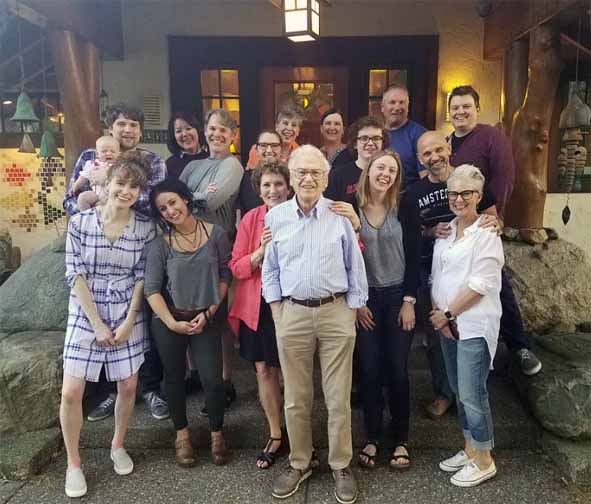
For most of his 94 years, Herb Pilhofer’s innovative spirit, keen mind and prolific and visionary musical career have made him a highly respected pioneer in Minnesota’s music industry. He is humbled and honored to be a part of it.
